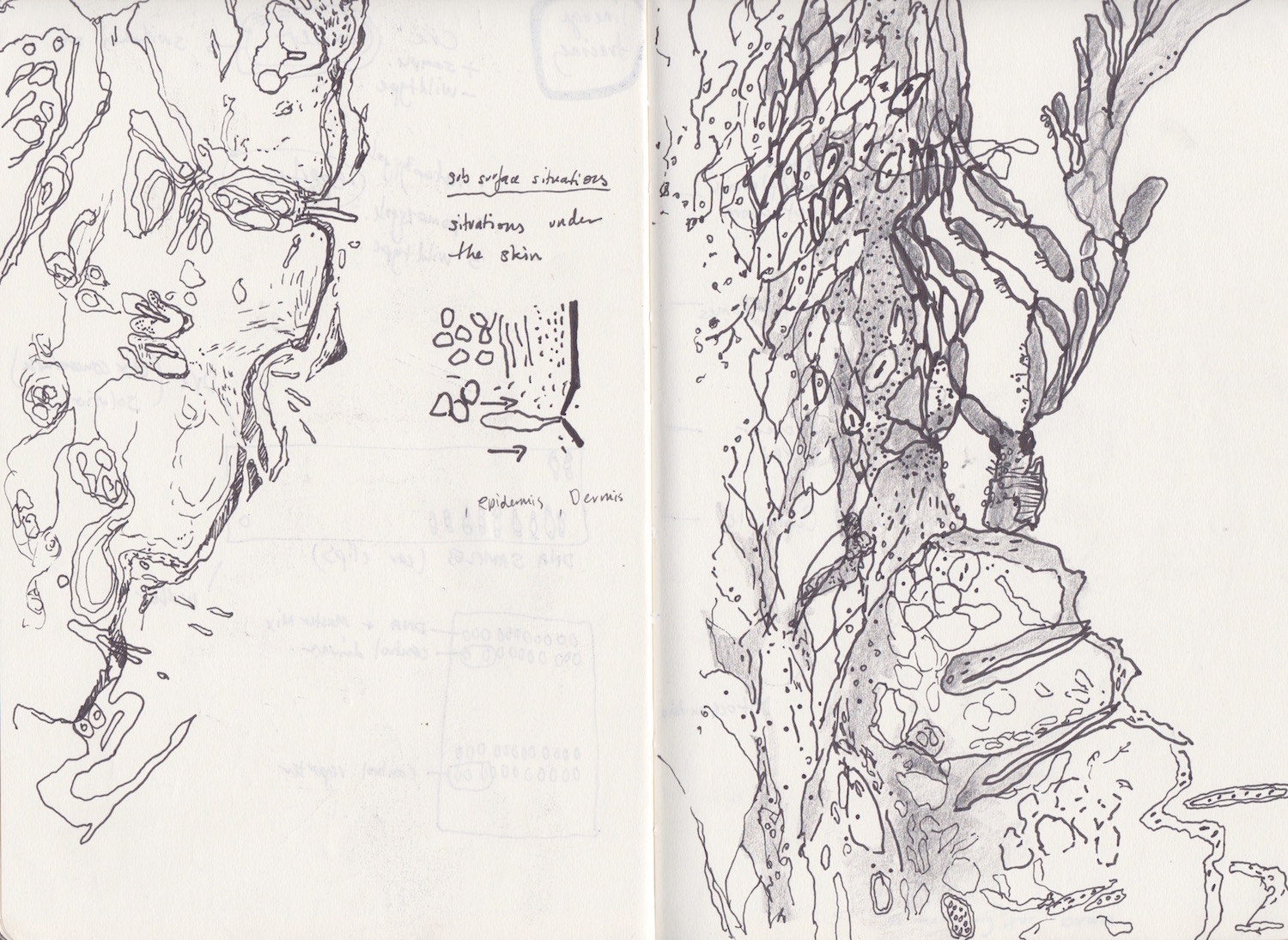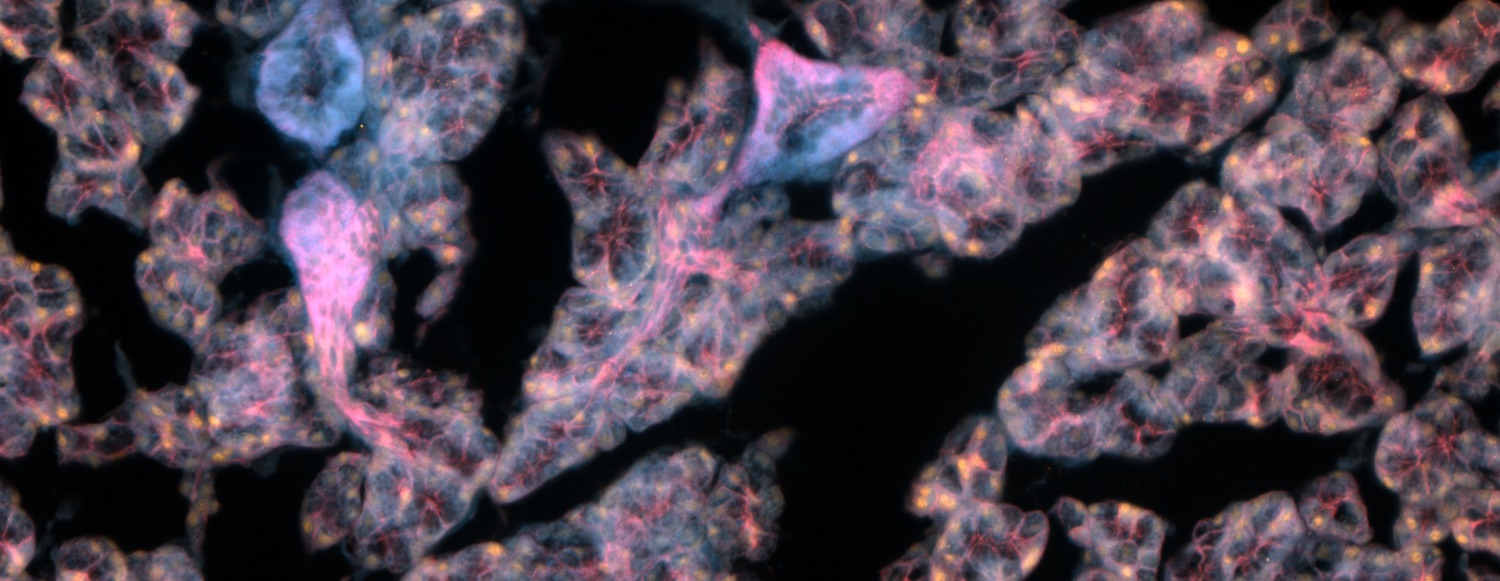 Microscopic skin studies from the Emmerson Lab, CRM | © Emily Fong 2020
Microscopic skin studies from the Emmerson Lab, CRM | © Emily Fong 2020
As an artist in the laboratory and hospital it has taken some time to become comfortable with the new surroundings and for those surroundings to adapt to me in them. On this particular occasion in the Emmerson Lab at CRM, I felt very excited to be trusted with a sample of skin in section to observe in my own way and time under the microscope. I’m delighted to discover this epithelial landscape and it appears that this organ enveloping the body is designed to help things rise to the surface and shed when the time is right. Recently I learned that the mouth is considered an ‘external environment’ in the medical and scientific realm. This took me a while to wrap my head around as to me it feels very much like an intimate and internal place in my own body. However the path from the mouth to the anus really is the site of an external journey that our food and drink ‘walks’ every day. Daily we are filtering the environment around us with the air we breathe, the conversations we engage in and the meals we prepare and share. Amazing, no? The salivary glands aid in the smooth transition of this digestive journey and if the body were a building they help to maintain a healthy and welcoming front door. These special glands are the driver of this art-science conversation, where we are spending time to be grateful for them, questioning what life is like without them and exploring what the possibilities are for their eventual return to the body. Join me in exploring the journey the salivary gland specimen takes from patient to laboratory and beyond. I’m not sure how it has taken me 30 odd years to discover that science is amazing but I am glad I am here now and that through my creative practice I can share what I’m seeing with you. I wonder what stories your skin could share, both from above and below the surface.
Thanks for reading,
Emily
You can contact/find me at:
emilyfongstudio@gmail.com
@emilyfongstudio
- To get hands on and creative with the tools of science, you can drop into an open session at the ASCUS Lab at Summerhall in Edinburgh, Scotland’s publicly accessible laboratory. You can find out about their many courses and opportunities here http://www.ascus.org.uk
 Thursday, February 6, 2020 at 10:23PM
Thursday, February 6, 2020 at 10:23PM  Microscopic skin studies from the Emmerson Lab, CRM | © Emily Fong 2020
Microscopic skin studies from the Emmerson Lab, CRM | © Emily Fong 2020
